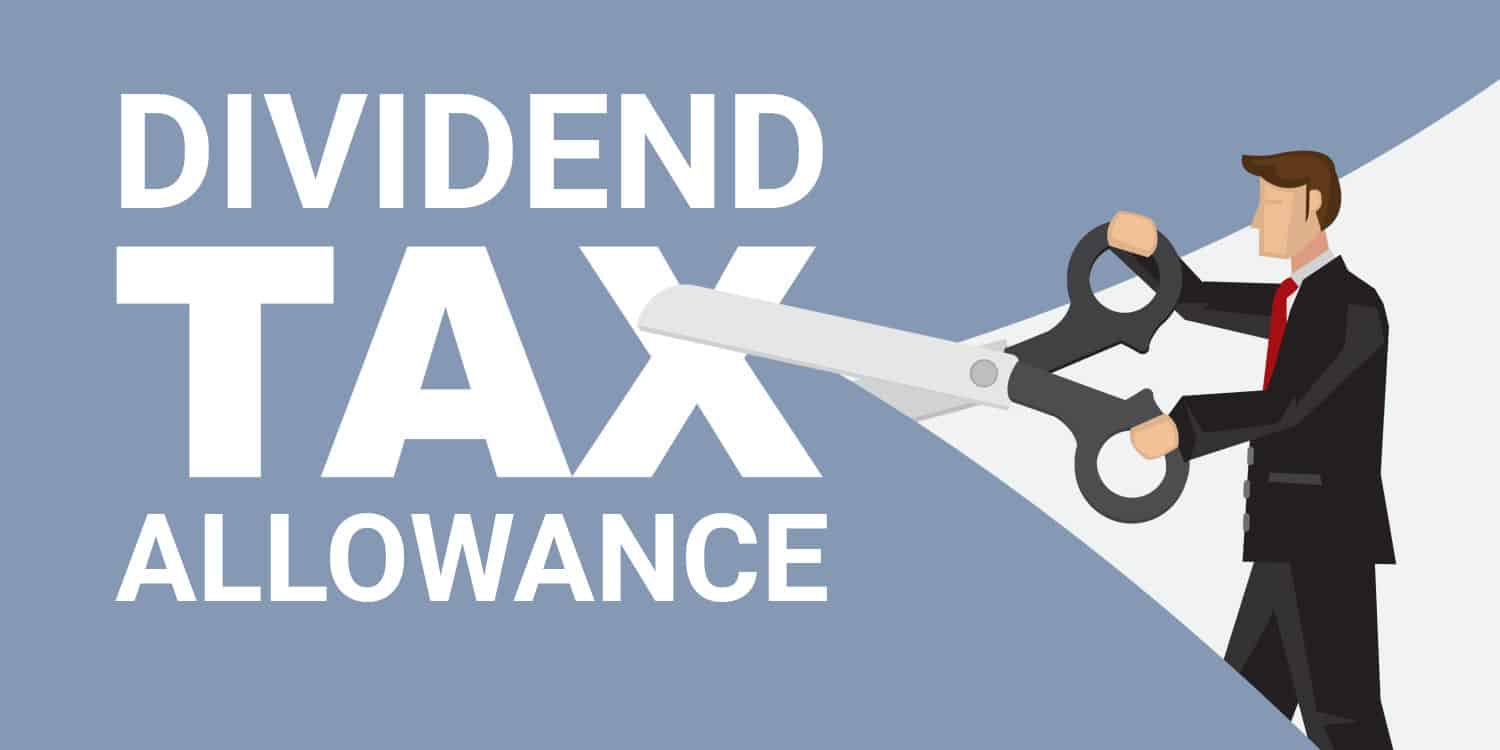On April 6 2024, the annual dividend allowance was cut from £1,000 to £500, which is disappointing news for shareholders. Here’s everything you need to know about this important update.
What is the dividend tax allowance?
The dividend allowance is the total amount you can receive in dividends before you must start paying tax on them. It was reduced to £500 for the 2024/25 tax year. Dividend payments that are issued through ISAs will remain tax-free.
What you need to pay if you go over the dividend allowance
The amount of tax that you need to pay once you exceed the dividend allowance is connected to your Income Tax band.
To ascertain your tax band, you need to take your general income (for example, your regular salary) and add this to your dividend income.
Taxpayers in Scotland pay tax on dividends according to the regular UK tax bands, but Scottish Income Tax rates apply to all other sources of income.
England, Wales & Northern Ireland tax bands and dividend tax rates 2024/25
| Band | Taxable income | Tax rate | Dividend tax rate |
| Personal Allowance | Anything up to £12,570 | 0% | 0%* |
| Basic | £12,571 to £50,270 | 20% | 8.75% |
| Higher | £50,271 to £125,140 | 40% | 33.75% |
| Additional | More than £125,140 | 45% | 39.35% |
Scottish tax bands and dividend tax rates 2024/25
| Band | Taxable income | Tax rate | Dividend tax rate |
| Personal Allowance | Anything up to £12,570 | 0% | 0%* |
| Starter | £12,571 to £14,876 | 19% | 8.75% |
| Basic | £14,877 to £26,561 | 20% | 8.75% |
| Intermediate | £26,562 to £43,662 | 21% | 8.75% |
| Higher | £43,663 to £50,270 | 42% | 8.75% |
| Higher | £50,271 to £75,000 | 42% | 33.75% |
| Advanced | £75,001 to £125,140 | 45% | 33.75% |
| Top | More than £125,140 | 48% | 39.35% |
*If a dividend payment is your only form of income, you won’t pay any tax on your dividends until the payments surpass £13,070 in a tax year. This is the combined total of the Personal Allowance (the annual amount you can earn before you are required to pay tax) plus the £500 dividend allowance.
To give you a better idea of what you may have to pay, let’s take a look at some examples.
Example 1
For the 2024/25 financial year, you are set to get a £10,000 dividend payment. This will be your only income for the year.
- The first £500 of dividend income is covered by the annual dividend allowance
- The remaining £9,500 is within your tax-free Personal Allowance (£12,570)
- None of this income is taxable, so you can keep the whole £10,000
Example 2
You are set to get a £25,000 dividend payment. This will be your only income for the year.
- £25,000 places you in the basic rate taxpayer bracket (£12,571 – £50,270)
- The first £500 is covered by the annual dividend allowance
- The next £12,570 is covered by your tax-free Personal Allowance
- Your taxable income is the remaining £11,930
- You must pay 8.75% dividend tax (the basic rate) on this amount = £1,044
- Your take-home dividend income for the year is £23,956
Example 3
You are set to get a £15,000 dividend payment and a salary of £40,000. Combined, this takes your earnings to £55,000.
- £55,000 places you in the higher rate taxpayer bracket (£50,271 – £125,140)
- The first £500 of dividend income is covered by the annual dividend allowance
- £12,570 of salary income is covered by your tax-free Personal Allowance
- Your taxable income is the remaining £41,930 (£14,500 dividends plus £27,430 salary)
- You pay 20% Income Tax (the basic rate) and 8% Class 1 National Insurance contributions (NIC) on the remaining £27,430 of salary income = £5,486 Income Tax and £2,194 NIC
- You pay 8.75% dividend tax (the basic rate) on £9,770 of dividend income = £855
- The remaining £4,730 of dividend income will be taxed at 33.75% (the higher rate) = £1,596
- Your take-home income for the year is £44,869
Example 4
You’re a Scottish taxpayer. For the 2024/25 financial year, you are set to get a £15,000 dividend payment and a salary of £40,000. Your combined income for the year is £55,000.
- Your salary places you in the intermediate tax band for Scottish income tax, but your combined earnings of £55,000 place you in the UK higher rate taxpayer bracket (£50,271 – £125,140) for dividend tax
- The first £500 of dividend income is covered by the annual dividend allowance
- £12,570 of salary income is covered by your tax-free Personal Allowance
- Your taxable income is the remaining £41,930 (£14,500 dividends plus £27,430 salary)
- You will pay the following rates of Scottish Income Tax on your salary:
- 19% (the starter rate) between £12,571 and £14,876 = £438
- 20% (the basic rate) between £14,877 and £26,561 = £2,337
- 21% (the intermediate rate) between £26,562 and £40,000 = £2,822
- You’ll pay 8% Class 1 NIC on your salary above £12,570 = £2,194
- You’ll pay 8.75% dividend tax (the basic rate) on £9,770 of dividend income = £855
- The remaining £4,730 of dividend income will be taxed at 33.75% (the higher rate) = £1,596
- Your take-home income for the year is £44,758
Thanks for reading
We hope you have found this post helpful. Be sure to check the 1st Formations Blog for more limited company guidance and small business advice. Please leave a comment if you have any questions.













This is a really helpful breakdown of the new dividend allowance! I wasn’t sure how the tax brackets would affect my dividend income, so the examples are great for understanding what I might owe. Especially the difference between UK and Scottish taxes. Thanks!
Thank you for your kind comment. We’re glad you found our explanation easy to follow.
Kind regards,
The 1st Formations Team
Hi!
Thanks for the good examples here, I have a bit of a problem with the 4th scenario, It looks like after all calculations I have £45332.47 Take Home Pay, not £43,694.38 as stated in the sample, The way I have calculated is:
Wages
1.- 12,570£ Personal Allowance, 0£ tax.
2.- 2,162£ Starter Rate Scotland 19%, 410.78£ tax.
3.- 10,955£ Basic Rate Scotland 20%, 2,191£ tax.
4.- 14,313£ Intermediate Rate Scotland 21%, 3,005.73£ tax.
Dividends
5.- 1,000£ Dividend Allowance, 0£ tax.
6.- 2,660£ Basic Rate of Dividend at 8.75%, 232.75£ tax.
7.- 11,340£ Higher Rate of Dividend at 33.75%, 3827.26£ tax.
Take Home Pay: 45,332.47£
Total Tax to pay: 9,667.52£
Any help would be appreciated thanks!
Thank you for your kind message, Antonio.
You are correct in that changing the calculation to Scotland income tax will change the calculation, as you have cited in the calculation.
We trust this information is of use to you.
Kind regards,
The 1st Formations Team